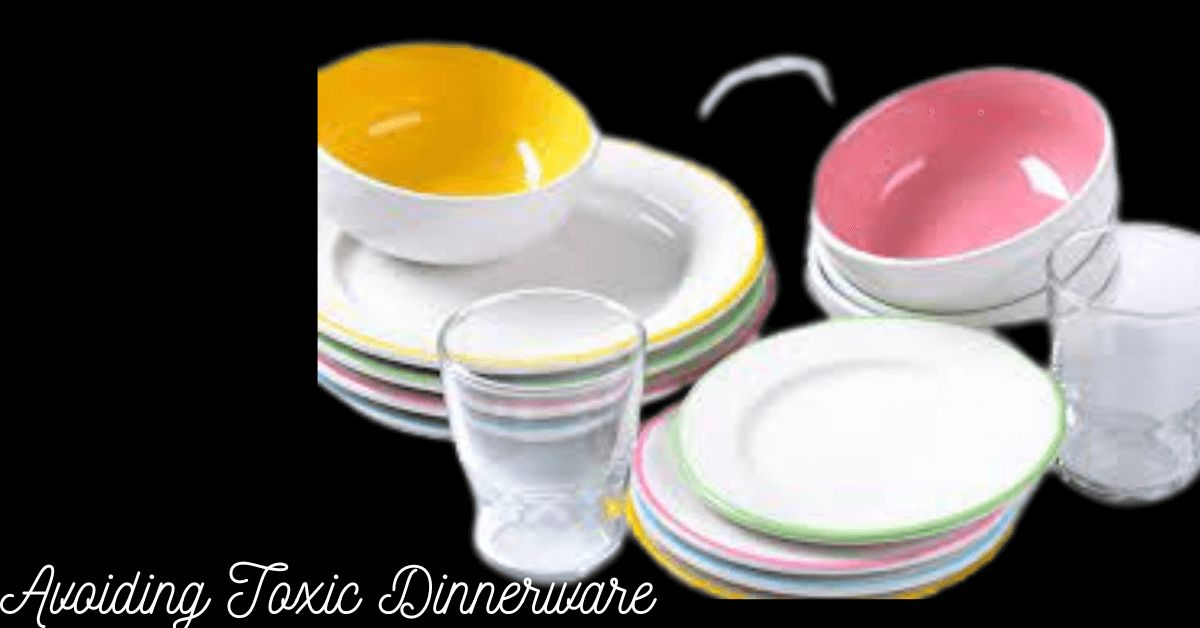What we put on our plates is just as important as the plates in today’s health-conscious culture. Dinnerware’s composition can have a significant influence on both the environment and our health. From toxic chemicals to unsustainable production practices, our choices about our dinnerware can ripple through our lives in unforeseen ways.
Understanding Toxic Dinnerware
When we think of dinnerware, we often envision elegant plates and cups, but some materials can pose serious health risks beneath the surface. Melamine, used to make colorful and lightweight dishes, can release harmful chemicals when heated. Lead-based glazes, once standard in ceramics, can contaminate our food and drink. Heavy metals like cadmium can also find their way into our bodies through certain types of tableware.
Health Implications of Toxic Dinnerware
The potential health risks associated with toxic dinnerware are concerning. Prolonged exposure to harmful chemicals in these materials has been linked to various health issues, ranging from hormonal imbalances to developmental problems in children. Pregnant women, in particular, should exercise caution, as these chemicals can negatively affect fetal development.
Identifying Safe Dinnerware Options
Due to the potential harm, these compounds may cause to developing fetuses, pregnant women, in particular, should use caution.
Navigating Labels and Certifications
Understanding labels and certifications is crucial when shopping for dinnerware. The FDA has regulations, but additional labels such as “BPA-Free” and “Phthalate-Free” can provide extra reassurance. Third-party testing and certifications add another layer of reliability to a product’s safety claims.
How to Test Your Dinnerware for Toxicity
If you need clarification on your current dinnerware, there are ways to test it for toxicity. Home testing kits and methods can show you whether harmful chemicals are leaching into your food. Signs of wear and tear, as well as simple acid and lead tests, can also provide insights into the safety of your dishes.
Minimizing Risks from Vintage and Hand-Me-Down Dinnerware
Vintage and hand-me-down dinnerware can hold sentimental value but also carry hidden risks. Antique tableware might contain lead-based glazes, posing a danger to your health. Taking precautions, such as using them for decorative purposes only, can help you enjoy these pieces without compromising safety.
Practical Tips for Safer Use of Dinnerware
Proper storage, safe microwave and oven use, and avoiding scratches and chips are essential practices for maintaining the safety of your dinnerware. You can stop toxins from leaking into your food and beverages by washing your dishes properly.
Children’s Dinnerware Safety
When it comes to kids, safety is paramount. Choose kid-safe, non-toxic plates that are made with tiny ones in mind. Avoid plastic dishes that may contain harmful chemicals like BPA and phthalates. Instead, choose alternatives like stainless steel, bamboo, or ceramic, ensuring your child’s mealtimes are as safe as enjoyable.
Balancing Aesthetics with Safety
Safety doesn’t mean compromising on style. There’s a growing market for stylish and safe dinnerware that suits various tastes. Finding the ideal mix between style and security for your dining table can be made more accessible by reading reviews and asking for recommendations from reliable sources.
Sustainable and Eco-Friendly Dinnerware Choices
For environmentally-conscious people, dinnerware choices can also make a difference. Choosing eco-friendly materials like bamboo or biodegradable substitutes can decrease your carbon footprint. Supporting ethical brands prioritizing sustainability and safe production practices aligns with your health and the planet’s well-being.
Addressing Misconceptions about Dinnerware Safety
Misinformation can cloud our judgment when it comes to dinnerware safety. It’s essential to debunk common myths and rely on scientifically-backed information. You may decide on the tableware you bring into your home more confidently if you know the facts.
Practical Steps to Transition to Safer Dinnerware
Transitioning to safer dinnerware doesn’t have to be overwhelming. Gradually replacing toxic tableware with safer options is a practical approach. Consider hosting plasticware swaps or community events to spread awareness about the importance of safe and sustainable dining choices.
Impact on the Environment
Beyond personal health, the impact of dinnerware choices extends to the environment. Disposing of non-recyclable dinnerware contributes to waste, while biodegradable and compostable alternatives offer more sustainable options. Making thoughtful decisions is good for the environment and your health.
Budget-Friendly Safe Dinnerware Options
Creating a safer dining experience doesn’t have to break the bank. Affordable alternatives exist for every budget. Thrift stores and second-hand markets can be treasure troves for safe, budget-friendly dinnerware options.
Expert Insights on Dinnerware Safety
We’ve gathered insights from health and safety professionals, nutritionists, and environmentalists to delve deeper into the topic. These experts offer helpful advice on choosing tableware that supports your sustainability and health goals.
Case Studies: Real-life Consequences of Toxic Dinnerware
Real-life stories highlight the importance of safe dinnerware. Personal anecdotes of dinnerware-related health issues and legal actions underscore the need for awareness and change in the industry.
Summary: Choosing Healthier Dinnerware for a Safer Table
In a world where convenience often takes precedence, being mindful of the materials our dinnerware is made from is essential. Prioritizing safer, non-toxic options protects our health and encourages positive change in the manufacturing and consumption of dinnerware.
